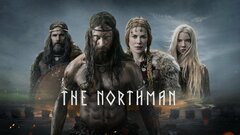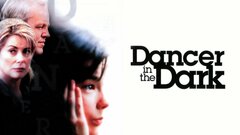A quirky chanteuse and songwriter who segued successfully from punk rock bands to a post-modern electronica solo career, dark-haired, pixieish Bjork emerged as Iceland's best known export beginning with the sweeping underground success of her band Sugarcubes in 1988. By 2000 the eclectic performer had not only conquered the music industry with her inimitable vocal style and songwriting but had moved into acting, winning the Best Actress prize at the Cannes Film Festival for her work in Lars von Trier's period musical "Dancer in the Dark."
Bjork's recording career began in 1977 when she released a self-titled Icelandic album at age 11. A collaborative effort with her musician stepfather, the record was a big seller in Iceland, and featured covers of classic pop tracks like The Beatles' "Fool on the Hill" in her native tongue as well as original compositions. Passionate about music, the trained vocalist, pianist and flutist formed many bands over the years, including the all-girl punk outfit Spit and Snot, the Goth-inspired rock band Kukl and the successful early 1980s new wave project Tappi Tikarrass. Already a star in her homeland, Bjork catapulted to fame in Europe and North America as vocalist of the avant-rock band Sugarcubes, who landed a US record deal with Elektra in 1988. Their debut album "Life's Too Good" and their single "Birthday" both quickly became cult classics. Their final album "Stick Around For Joy" was similarly successful, and the band split at the top of their game in late 1992.
Interested in opportunities and soundscapes outside of the traditional guitar-bass-drum rock configuration, Bjork began working with 808 State, forerunners of electronica, in 1990. When her solo record "Debut" hit in 1993, the influence of techno was apparent. Bjork's odd phrasing and breathy but surprisingly strong voice was a good match for the unpredictable neo-dance genre, and her strange and evocative music videos garnered much notice and acclaim. More celebrated and artistically free than she had been with the Sugarcubes, Bjork enjoyed a successful and innovative solo career and her eccentric fashion sense and peculiar persona won her status as something of a pop culture icon.
When similarly renowned director Lars von Trier embarked on the dramatically gripping musical "Dancer in the Dark," he called on Bjork not only to contribute songs (which she had recently done with 1999's acclaimed independent feature "Being John Malkovich"), but to star in the film. Not exactly a stranger to the craft, Bjork counted among her credits a starring role in the Icelandic production "The Juniper Tree" (filmed in 1986, screened at film festivals around the USA in 1991), a fairy tale inspired drama, and a turn as a troubled teen in the 1987 teleplay "Glerbrot" in addition to a cameo in Robert Altman's celebrity-studded 1994 feature "Ready to Wear (Pret-a-Porter)."
A peek inside a struggling single mother's fantasy world, "Dancer in the Dark" required Bjork to delve deep into her consciousness and to sing and dance, as she essayed a woman who envisioned herself and her factory co-workers as players in spectacular Hollywood musicals. The artist had previously studied dance in order to wow viewers with her remarkable breakthrough video "It's Oh So Quiet" but gladly underwent additional training for the film. More complicated was the acting end. Bjork's internalized approach to the devastating role reportedly caused the real-life single mother personal emotional distress as well as strife with von Trier.
Troubles aside, "Dancer in the Dark" and Bjork herself received high praise and top honors when the film debuted at Cannes in 2000. With this celebrated performance and a long-awaited new album on the horizon for 2001, the artist (who has predicted she will be still singing at age 90) seemed sure to maintain a rewarding and illustrious career for many years to come.

























































